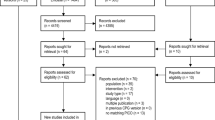Abstract
Study hypothesis
Level 1 trauma centers reduce mortality and improve functional outcomes in major trauma. Despite this, many countries, including Ireland, do not have officially designated major trauma centers (MTC). This study aimed to examine international trauma systems, and determine how to “best fit” trauma care in a small country (Ireland) to international models.
Methods
The literature was reviewed to examine international models of trauma systems. An estimate of Irish trauma burden and distribution was made using data from the Road Safety Authority (RSA) on serious or fatal RTAs. Models of a restructured trauma service were constructed and compared with international best practice.
Results
Internationally, a major trauma center surrounded by a regional trauma network has emerged as the gold standard in trauma care. In Ireland, there are no nationally coordinated trauma networks and care is provided by 26 acute hospitals with a mean distance to hospital from RTAs of 20.6 km ± 15.6. Based on our population, Ireland needs two Level 1 MTCs (in the two areas of major population density in the east and south), with robust surrounding trauma networks including Level 2 or 3 trauma centers. With this model, the estimated mean number of cases per Level 1 MTC per year would be 628, with a mean distance to MTC of 80.5 ± 59.2 km, (maximum distance 263.5 km).
Conclusion
Clearly designated and adequately resourced MTCs with trauma networks are needed to improve trauma outcomes, with concomitant investment in pre-hospital infrastructure.





Similar content being viewed by others
References
Ten Duis HJ, van der Werken C (2003) Trauma care systems in the Netherlands. Injury 34:722–727
Peden MSR, Sleet D, Mohan D, Hyder AA, Jarawan E, Mathers C (2004) World report on road traffic injury prevention. World Health Organisation
Lendrum RA, Lockey DJ (2013) Trauma system development. Anaesthesia 68(Suppl 1):30–39
Glance LG, Osler TM, Mukamel DB, Dick AW (2012) Impact of trauma center designation on outcomes: is there a difference between Level I and Level II trauma centers? J Am Coll Surg 215:372–378
Gabbe BJ, Simpson PM, Sutherland AM et al (2012) Improved functional outcomes for major trauma patients in a regionalized, inclusive trauma system. Ann Surg 255:1009–1015
Prada SI, Salkever D, Mackenzie EJ (2012) Level-I trauma center effects on return-to-work outcomes. Eval Rev 36:133–164
Haider AH, David JS, Zafar SN et al (2013) Comparative effectiveness of inhospital trauma resuscitation at a French trauma center and matched patients treated in the United States. Ann Surg 258(1):178–183
Curtis KA, Mitchell RJ, Chong SS et al (2012) Injury trends and mortality in adult patients with major trauma in New South Wales. Med J Aust 197:233–237
Sasser SVM, Kellermann A, Lormand JD Prehospital trauma care systems. Geneva, World Health Organization
Morrison JJ, McConnell NJ, Orman JA, Egan G, Jansen JO (2013) Rural and urban distribution of trauma incidents in Scotland. Br J Surg 100:351–359
Resources for optimal care of the injured patient American College of Surgeons (2006)
American College of Surgeons (2006) Consultation/verification program reference guide of selected classification
Improving services for major trauma questionnaire Northern Ireland (2007)
Annual population and migration estimates (2012) Ireland Central Statistics Office
Schadde E, Slankamenac K, Breitenstein S et al (2013) Are two-stage hepatectomies associated with more complications than one-stage procedures? HPB Off J Int Hepato Pancreatol Biliary Assoc 15:411–417
London Trauma Office Annual Report April 2010 to March 2011. London (2011)
The intercollegiate group on trauma standards RCoSoE (2009) Regional trauma systems interim guidance for commissioners
Authority RS. Road Safety Strategy 2007–2012. 3rd Road Safety Strategy edn. Road Safety Authority (2007)
Vonlanthen R, Slankamenac K, Breitenstein S et al (2011) The impact of complications on costs of major surgical procedures: a cost analysis of 1200 patients. Ann Surg 254:907–913
Taylor C, Jan S, Curtis K et al (2012) The cost-effectiveness of physician staffed helicopter emergency medical service (HEMS) transport to a major trauma centre in NSW. Aust Injury 43:1843–1849
Galvagno SM Jr, Haut ER, Zafar SN et al (2012) Association between helicopter vs ground emergency medical services and survival for adults with major trauma. J Am Med Assoc 307:1602–1610
Ringburg AN, Spanjersberg WR, Frankema SP, Steyerberg EW, Patka P, Schipper IB (2007) Helicopter emergency medical services (HEMS): impact on on-scene times. J Trauma 63:258–262
Galvagno SM Jr, Thomas S, Stephens C et al (2013) Helicopter emergency medical services for adults with major trauma. Cochrane Database Syst Rev 3:CD009228
Delgado MK, Staudenmayer KL, Wang NE et al (2013) Cost-effectiveness of helicopter versus ground emergency medical services for trauma scene transport in the United States. Ann Emerg Med 62(4):351–364
Durham R, Pracht E, Orban B, Lottenburg L, Tepas J, Flint L (2006) Evaluation of a mature trauma system. Ann Surg 243:775–783 discussion 83–5
Admission to acute hospitals for injuries as a result of road traffic collisions in Ireland 2005–2009 (2011) Department of Public Health, Navan, Health Service Executive Dublin North East
Acknowledgements
The authors acknowledge the assistance of Prof. Brendan Whelan with the statistical elements of this study.
Conflict of interest
None.
Author information
Authors and Affiliations
Corresponding author
Electronic supplementary material
Below is the link to the electronic supplementary material.
Rights and permissions
About this article
Cite this article
Mohan, H.M., Mullan, D., McDermott, F. et al. Saving lives, limbs and livelihoods: considerations in restructuring a national trauma service. Ir J Med Sci 184, 659–666 (2015). https://doi.org/10.1007/s11845-014-1234-9
Received:
Accepted:
Published:
Issue Date:
DOI: https://doi.org/10.1007/s11845-014-1234-9




